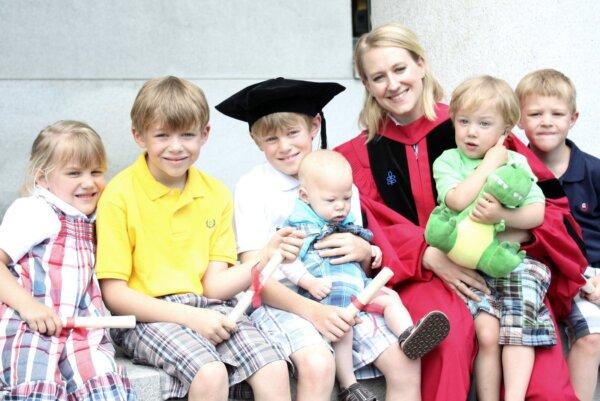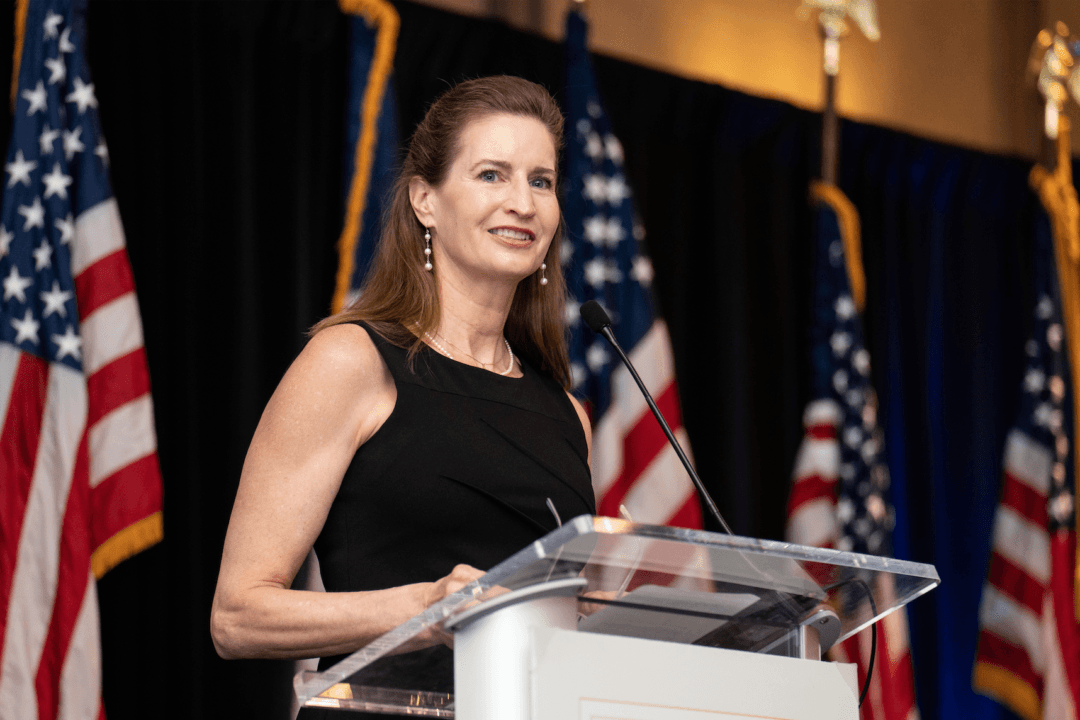Recently, I recommended a wonderful book about large families to a friend, a mother of seven. “Is it dark? Depressing?” she asked, clearly wanting none of that. “No,” I told her. “It’s a book filled mostly with joy.”
With a doctorate in economics from Harvard University and years of teaching and research behind her—she’s currently a professor at the Busch School of Business, a branch of the Catholic University of America in Washington, D.C.—Catherine Ruth Pakaluk followed her longtime interest in demographics and began wondering why, in a time when American families are shrinking and birth rates are well below replacement levels, 5 percent of women in our country buck this trend and have large families.
Along with her colleague Emily Reynolds of the Wheatley Institute and two assistants, Mary Robotham and Sierra Smith, Ms. Pakaluk turned to field research to find some answers. In 2019, they interviewed at length 55 American women “who had five or more children with their current spouse.” Aware of the criticism that only uneducated women would give birth to large numbers of children, they interviewed only those mothers who had graduated from college.
But Ms. Pakaluk’s interest in this particular subject extends far beyond that of an Ivory Tower researcher.

chores. (Biba Kayewich)
Reasons of the Heart
In 1999, her first year in graduate school at Harvard, the 23-year-old Catherine met and married Michael Pakaluk, a widowed father of six who had earned his own doctorate from Harvard in 1988. Though she briefly mentions this circumstance a few times in “Hannah’s Children,” Ms. Pakaluk was kind enough via an email and follow-up to a phone conversation with me to add details regarding that marriage: “Michael and I were drawn to each other because of our love for our faith, and our intense interest in ideas and truth. He was a philosopher—I an economist interested in philosophical foundations of economic thought. It was an easy match. We were married in August 1999. Our first son was born in May of 2000 (on Mother’s Day.) This is our 25th anniversary year.”In the years since, seven more children were born to the couple. The six children from Michael Pakaluk’s first marriage are now grown and married. Of the eight children born to Catherine, two are still living in the home. Today, after a six-year stint at Florida’s Ave Maria University, both Michael and Catherine teach at Catholic U.

‘May I Ask Why?’
These women are indeed open in sharing their ideas and opinions. They are also quite diverse, ranging from a pediatrician who gave up her medical ambitions to raise her children to college professors such as Catherine Pakaluk. They are Mormons, Catholics, Jews, and Protestants, and they are as different in their personality types as one might expect. But one commonality they all share is the joy they find in motherhood.Again and again, even when they don’t speak directly of this joy, it comes across in their words. When Ms. Pakaluk and her team insert portions of their interviews into the text, which they frequently do, even in print we hear the exuberance these women take from their children. A mother of seven, Hannah, for example, says of the arrival of her second child: “I experienced this feeling of your love expanding. I get all choked up about it. I was like, Wow, I really don’t get this. You can expand a family and your love grows. ... And that just kept growing.”
As anyone familiar with large families is aware, these women and their husbands sometimes experience untoward comments in places such as restaurants and grocery stores. Steph, a mother of six and part-time pediatrician, and her husband were with their children in a restaurant when a woman approached and asked “Are these all your children?” At that point, Steph was pregnant with her sixth.
“And I said, ‘Yes.’
“And I said, ‘Yes.’
“And she said, ‘May I ask why?’
“And I was so taken back. I didn’t even know how to respond.”
An Abundance of Revelations
Combine these interviews with Ms. Pakaluk’s astute observations and analyses, and we have a book packed full of information and surprises. Here are only a few disclosures that may surprise readers.First, all of these women made deliberate choices to have large families. These were not casual decisions. They either gave up promising careers or modified those ambitions in favor of children.
Here, too, we see that being part of a large family can bring unexpected benefits. These children learn and practice the small virtues—caring for a younger sibling, dividing up household chores, learning to share—that will stay with them through a lifetime. In this sense, a large family serves as an incubator for ethics and behavior.
One startling discovery by Ms. Pakaluk and her team was the power of a child to heal a wounded soul. When Kyra was eight months pregnant with her third baby, her husband’s beloved father died, and then he lost his job, and “it was soul-crushing to him.” But then the baby arrived. “I put her in his arms, and he never put her down,” she said. The new child was healing.
Jackie, a mother of 12, recounts her middle school son’s bout with depression and the effects of a new baby on him: “He would just hold her and his whole mannerism would change, and his demeanor would change ... I could just watch his body language, his facial expressions, and he would be better.”
Faith and Family
Yet another surprise comes in the conclusion to “Hannah’s Children.” As Ms. Pakaluk makes clear, government programs that pay women to bear children or that extend maternity leave are time-tested failed attempts to reverse our below-replacement-level rates of birth. “What, then,” she asks, “might help reverse the trend of low birth rates? The testimonies in this volume, offered by women at all levels of engagement with paid work, suggest that we look to the strength and vitality of living religious communities.”Nearly all the women in this study look to faith for purpose in life, solace, and understanding of their lives. As Ms. Pakaluk notes, these women offer “not a plan, or a policy, but a message—the salvation of the world is in the birth of a child.” To help achieve that end, they belong to religious communities that “effectively assist families in passing on faith and tradition to their children.” Consequently, Ms. Pakaluk recommends that “religious freedom as family policy would mean the government’s taking a step back from providing human services directly, starting with education, and asking churches to become stronger by doing more.”
When we finish reading “Hannah’s Children,” we realize that many of these women approach their motherhood with humility. They have followed their own desires and hearts and are eager to share their joy, but they hesitate to do so for fear of seeming judgmental about their peers, who prefer small families or no children at all.
“In a sense,” Ms. Pakaluk told me, “I perceived that what I could do with this project is actually be the voice for women who are otherwise reticent to speak so much about how blessed they are by their children and what a great way of life this is.”
In “Hannah’s Children,” Catherine Pakaluk has succeeded in fulfilling that ambition.








